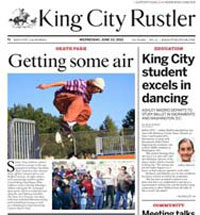California’s Central Coast and the broader statewide economy stand at the brink of a technological transformation driven by unmanned aircraft systems (UAS), commonly known as drones, and advanced air mobility (AAM) technologies, such as electric vertical takeoff and landing (eVTOL) aircraft. These innovations, once the stuff of science fiction, are rapidly becoming cornerstones of a modern economic ecosystem — creating high-skill jobs, accelerating economic growth, boosting regional resilience, and securing America’s position as a global leader in aviation.
Drones are already revolutionizing key sectors, including infrastructure inspection, emergency response, package delivery and precision agriculture. In a state like California — home to rich agricultural valleys, sprawling urban areas and rugged terrain — these technologies provide unmatched flexibility, efficiency and speed.
Acting upon this opportunity is one of the key conclusions identified by Uplift Central Coast Coalition/California Jobs First and the Regions Rise Together initiative — both convened by MBEP. Imagine a future where drones deliver medical supplies to rural hospitals, monitor wildfire conditions in real time, or inspect bridges and power lines without risking human life. That future isn’t speculative; it’s beginning to unfold now.
However, to fully realize the economic promise of UAS and AAM, we must establish a robust domestic industrial base and facilitate their safe and seamless integration into the National Airspace System. This isn’t just about efficiency. It’s a national security and economic imperative.
The administration’s recent executive order underscores this urgency. It calls for scaling UAS operations, accelerating rulemaking for beyond visual line of sight (BVLOS) flights, deploying AI tools to streamline waiver applications, and launching pilot programs for eVTOL aircraft. For California — a state at the forefront of both aviation and technological innovation — this is an unprecedented opportunity to lead.
Why does this matter for California’s economy and, specifically, the Monterey Bay region?
First, UAS and AAM development creates a high-tech manufacturing and software ecosystem that offers good-paying jobs, ranging from aerospace engineering to drone-based agricultural and infrastructure inspection services. Investing in these sectors diversifies California’s economy beyond traditional tech and entertainment, enabling rural and suburban communities to share in the innovation economy.
Second, building and securing domestic drone production reduces our reliance on foreign-made systems, particularly from adversarial nations. Just as America has sought to repatriate semiconductor and battery manufacturing, the drone industry will also be anchored at home. Strengthening supply chains for critical drone components ensures that California remains competitive and that our technology isn’t subject to foreign manipulation or cybersecurity risks.
Third, drones and AAM can address longstanding inequities in transportation, healthcare access, and infrastructure development. In areas where traditional road systems are inadequate, these aerial systems can deliver goods, connect isolated communities, and provide new modes of mobility. For underserved populations of California’s Central Coast, this is not just a convenience — it is a lifeline.
The federal government’s plan to support test ranges, enable advanced pilot programs like the eVTOL Integration Pilot Program, and prioritize U.S.-manufactured drones is also a call to action for local governments and industries. Public-private partnerships will be key. Local agencies should collaborate with research institutions and private companies to propose and implement pilot programs that address local needs. These efforts can showcase scalable models for cargo delivery, emergency medical response and rural access — aligned with California’s climate, workforce, and innovation goals.
Moreover, California must push for equitable regulatory frameworks that allow small businesses, start-ups, and community-based organizations to participate in this aerial revolution. The same drone technology used for defense applications must also be adapted to support climate resilience, farmworker safety, and disaster relief — priorities deeply relevant to our state.
This is why MBEP co-founded the Monterey Bay Tech Hub alongside UC Santa Cruz and DART. This initiative goes beyond aviation; it is about transformation. Drones and advanced air mobility (AAM) technologies represent a significant leap in our economic infrastructure, similar to the impact that railroads, highways, and broadband had in the past. By investing in this emerging field, California can establish resilient, future-oriented industries that embody its core values: innovation, sustainability, equity, and security. Additionally, investing in AAM at this early stage allows California the opportunity to shape industry standards in a manner that ensures the technology is used equitably, benefiting all people.
The skies above us are no longer just a pathway for commercial jets and satellites. They represent a new frontier of mobility, poised to deliver public benefits and economic vitality. California has the talent, the urgency, and the public mission to lead this charge. Now is the time to act.
Tahra Goraya is President and CEO of Monterey Bay Economic Partnership (MBEP), a regional member-supported nonprofit organization consisting of public, private, and civic entities located throughout the counties of Monterey, San Benito and Santa Cruz. Founded in 2015, its mission is to improve the economic health and quality of life in the region.














